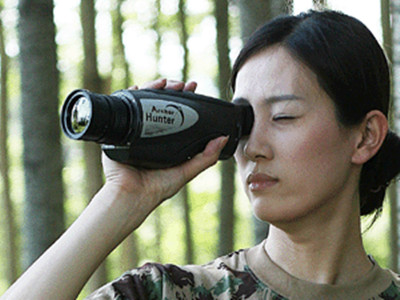(单词翻译:单击)
When we are in a fairly dark room, or outside at night away from lights, we can still see, but wecan't see the colors of things very well. Why is that?
当我们在一个非常昏暗的房间或夜晚在无灯的户外,我们仍然可以看见物体,但很看不清楚物体的颜色,为什么会这样呢?
There are two kinds of light-sensitive organs located in the backs of our eyes: rod-shaped andcone-shaped.
在我们眼睛的后部有两种感光器官:杆状体和锥状体。
Both rods and cones are sensitive to light.
它们都对光线敏感。

The difference between them is that therods allow us to see in very dim light but don't permit detection of color, while the cones let ussee color but they don't work in dim light.
而它们的差别就在于,杆状体能让我们看见昏暗的光线下的东西,但无法辨别颜色;而锥状体能让我们辨别物体的颜色,但在昏暗的灯光下却无法发挥作用。
When it gets dark the cones lose their ability to respond to light.
当光线变暗时,锥状体失去对光线做出反应的能力。
The rods continue to respond toavailable light, but since they cannot see color, so to speak, everything appears to be variousshades of black and white and gray.
而杆状体继续对光线做出反应,但由于它不能帮助人们识别颜色,因此所有的物体看上去都是不同形状的黑色、白色或者灰色。
A curious thing is that in dim light you can see more clearly out of the side of your eye, becausethe light-sensitive rods are more highly concentrated off to the side in the back of your eye.
奇特的是,在光线暗淡情况下,通过眼睛两边的余光你能看得更清晰,因为杆状体更集中地分布在眼睛后部的边侧。
So, next time you're out on a clear night, notice how little color you can see, and how you can see objects like dim stars better out of the corner of your eye than from the center.
所以,下次在一个晴朗的夜晚外出,留意一下你是不是看不见什么颜色,并且关注一下用眼角的余光看东西,例如晦暗的星星,会不会比正视看效果更好。


